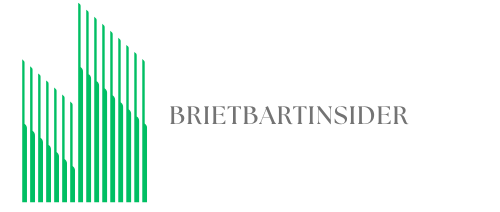Table of Contents
ToggleEver wonder why some habits stick like glue while others fade away faster than a New Year’s resolution? Welcome to the fascinating world of habit loops, where cues, routines, and rewards dance together in a never-ending cycle. Understanding these loops can unlock the secret to building better habits or breaking the pesky ones that just won’t quit.
Understanding Habit Loops
Habit loops consist of three key components: cues, routines, and rewards. Recognizing these elements helps individuals reshape their habits effectively.
The Components of Habit Loops
Cues serve as triggers that initiate the habit loop. They can be internal cues, like emotions, or external ones, like time or location. Routines follow the cues and are the actual behaviors or actions taken in response. Rewards provide positive reinforcement, which increases the likelihood of repeating the behavior. Together, these components create a cycle that solidifies habits over time.
The Science Behind Habit Formation
Research indicates that habit formation occurs in the brain’s basal ganglia, a region associated with decision-making and initiating movements. During this process, neural pathways strengthen, making the routine more automatic. Studies show that consistency in cues and rewards enhances habit formation. The more a habit is repeated in the same context, the more ingrained it becomes, reinforcing its presence in daily life.
Everyday Habit Loop Examples
Everyday habits manifest in different areas of life, showcasing how cues, routines, and rewards intertwine. Understanding these loops clarifies how habits form and endure.
Morning Routine Habits
Morning routines exemplify habit loops. A common cue is an alarm clock ringing. This prompts actions like getting out of bed and brushing teeth. Following these cues, individuals may turn to coffee as a reward. Positive feelings from caffeine reinforce the routine, encouraging consistency. Another example includes placing workout clothes by the bed, triggering a decision to exercise. This action leads to endorphin release as a reward, making it easier to repeat.
Work-Related Habits
Work-related habits often arise from environmental cues. Entering the office triggers various rituals like checking emails or organizing tasks. These routines help set the tone for productivity. After completing tasks, individuals often reward themselves with short breaks or snacks, reinforcing the work behaviors. Another example is the habit of using a specific planner for daily tasks. This tool cues the user to plan their day, resulting in better time management. Successful execution leads to feelings of accomplishment as a reward.
Fitness and Wellness Habits
Fitness and wellness habits showcase clear habit loops as well. The cue may involve wearing athletic shoes, leading to a commitment to exercise. Often, the routine consists of a specific workout, whether running or lifting weights. Following this, individuals experience the reward of endorphins or improved mood. Setting specific goals, such as a daily step count, also provides cues that prompt physical activity. Reaching these targets serves as motivation, reinforcing the desire to stay active.
The Role of Triggers in Habit Loops
Triggers play a crucial role in activating habit loops. They serve as cues that initiate routines and set the stage for rewards.
Types of Triggers
Triggers can be classified into two main types: internal and external. Internal triggers stem from within, often influenced by emotions or thoughts. External triggers come from the environment, such as specific locations or times of day. Each type affects habits differently. Internal triggers may prompt responses based on feelings of stress or happiness. External triggers could include seeing a certain time on the clock or entering a specific room. Understanding these types helps individuals identify effective cues for their habit formation.
Examples of Effective Triggers
Effective triggers can enhance the formation of desired habits. For instance, setting an alarm can cue a morning exercise routine. The sight of workout clothes can also trigger an inclination to engage in physical activity. In a professional setting, entering an office might signal the start of focused work tasks. Using a to-do list can serve as a reminder to maintain productivity. Associating particular locations with behaviors creates stronger habits over time. Recognizing these triggers is essential for developing consistent and beneficial routines.
Breaking Bad Habits
Breaking bad habits involves understanding their underlying loops. Recognizing these loops is the first crucial step in creating lasting change.
Identifying Negative Habit Loops
Identifying negative habit loops requires careful observation of cues and routines. She might notice that stress (internal trigger) leads to binge eating (routine), prompting feelings of temporary relief (reward). They can keep a journal to track these instances, revealing patterns over time. External triggers like boredom or social environments may also play significant roles in reinforcing negative behaviors. Recognizing these connections empowers individuals to confront the sources of their bad habits effectively.
Strategies for Change
Effective strategies for change focus on altering cues and routines. Replacing unhealthy snacks with fruits when feeling stressed can minimize the impulse to binge eat. Developing new routines, such as going for a walk during lunch breaks, provides a healthier outlet for coping with stress. Setting reminders on phones can act as cues to prompt engagement in positive activities. Cultivating a supportive environment also significantly aids in reinforcing good habits while diminishing the grip of negative ones. Engaging friends or family can help maintain accountability and encouragement throughout the change process.
Understanding habit loops is essential for anyone looking to build positive habits or break negative ones. By recognizing the cues routines and rewards that shape behavior individuals can take control of their habits. The insights gained from dissecting these loops can lead to lasting change in daily routines.
Whether it’s enhancing productivity at work or improving personal wellness the right approach to habit formation can yield significant benefits. With consistent effort and awareness of triggers individuals can create a more fulfilling and productive lifestyle. Embracing the science of habit loops empowers everyone to make informed choices and cultivate habits that align with their goals.








